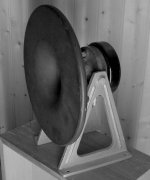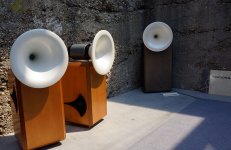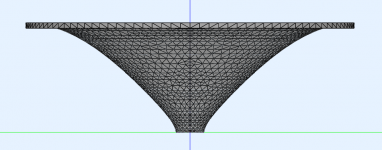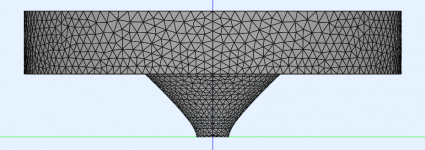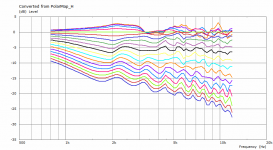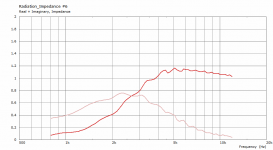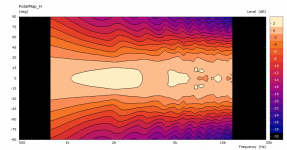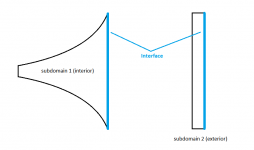I
Because you are probably not modelling the outside properly, and sorry of you are actually modelling a complete cylinder which goes way to beyond the back of tje throat, than you are doing it right.
Im sorry, not at my computer to actually check you rmodel, holidays
Do you know what puzzles me? When I make the free standing cylinder longer (50 mm here), it is actually worse. This seems counter-intuitive to me...
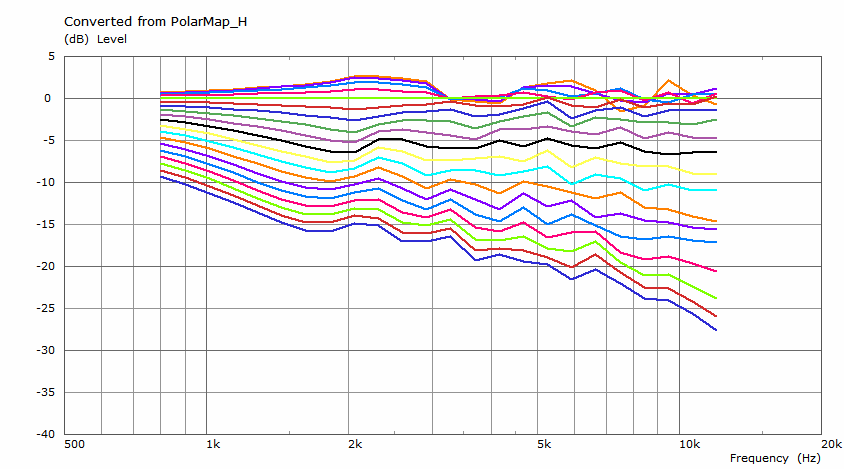
Because you are probably not modelling the outside properly, and sorry of you are actually modelling a complete cylinder which goes way to beyond the back of tje throat, than you are doing it right.
Im sorry, not at my computer to actually check you rmodel, holidays
Last edited:
However, the horn exterior is now modeled as a simple cylinder and that is just an approximation of the real exterior. Changing the cylinder width changes the results. Just like changing the mouth subdomain interface shape effects the results. Interestingly, with this method, the inside of the horn is bigger (volume) than the outside
Would a conical cylinder connected to the back of the horn (mouth) make any difference, possibly in combination with a small roundover at the edge of the horn mouth?
Would a conical cylinder connected to the back of the horn (mouth) make any difference, possibly in combination with a small roundover at the edge of the horn mouth?
The closer you make the model resemble the physical item the better it is. So a cone projected from the mouth to the throat would be better (in this case) than a cylinder. An actual outer horn that resembles the inner horn shape would be even better.
Last edited:
I can't see how such simple, elegant and reasonable method can cause so much confusion. Of course it would be "better" to model the entire rear side and it would be "even better" to include the body of a compresion driver (where would you stop?). There could be always caveats like that. But what difference would that made? Has anyone tried that? I believe the differences in the frontal hemisphere would be very small. That's the main reason why it is being done this way after all.
Changing the length of the cylinder is a completely different thing and would have the same effect even if the rear side was more "realistic" behind it (again, that would have only a very minor effect, IMO). Shape and size of the edge has still a strong effect on how the wavefront is diffracted behind the horn, but then, along the rear side, the SPL will be too low to make any more difference. At least this it what I would expect
Changing the length of the cylinder is a completely different thing and would have the same effect even if the rear side was more "realistic" behind it (again, that would have only a very minor effect, IMO). Shape and size of the edge has still a strong effect on how the wavefront is diffracted behind the horn, but then, along the rear side, the SPL will be too low to make any more difference. At least this it what I would expect
Last edited:
Ok one last try;
If your horn wall has a thickness, you are doing it ok.
If your horn wall has zero.thickness you are not doing it ok and you should model an enclosed rear OR give the walls a thickness, so that there will be an outside and an inside, it really has to be this way or the reslults are wrong.
If your horn wall has a thickness, you are doing it ok.
If your horn wall has zero.thickness you are not doing it ok and you should model an enclosed rear OR give the walls a thickness, so that there will be an outside and an inside, it really has to be this way or the reslults are wrong.
One more attempt to explain the method:
There are two "subdomains" that are coupled by a surface called "interface". They know nothing else about each other than this joint boundary. As Kees mentioned, you can't work with surfaces of zero thinkness.
Yes, it is only an approximation to the rear shape. Hopefully not so bad one.
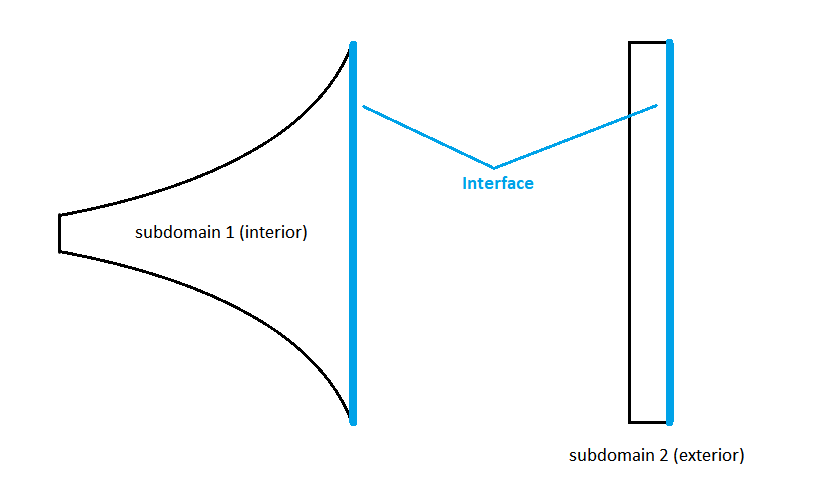
There are two "subdomains" that are coupled by a surface called "interface". They know nothing else about each other than this joint boundary. As Kees mentioned, you can't work with surfaces of zero thinkness.
Yes, it is only an approximation to the rear shape. Hopefully not so bad one.
Attachments
Last edited:
One more attempt to explain the method:
There are two "subdomains" that are coupled by a surface called "interface". They know nothing else about each other than this joint boundary. As Kees mentioned, you can't work with surfaces of zero thinkness.
Yes, it is only an approximation to the rear shape. Hopefully not so bad one.
Sorry but this is simply not correct.
This way you have the inside of the horn ( subdomain1, inside) sticking in subdomain2 ( outside) withoutout proper coupling.
If you make the cylinder a little.more deeper than the horn and close the rear the model.will be correct.
I will.stop now.trying to convince you, this is what I have found un 10+ years of using ABEC.
I am on a holiday so cant show you the proper way, and this is getting frustrating for both of us ( moreso since I have to type on my phone) so I will stop now.
Kind regards,
Kees
Last edited:
- Home
- Loudspeakers
- Multi-Way
- Acoustic Horn Design – The Easy Way (Ath4)
